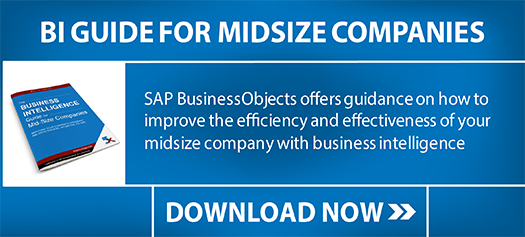As we move closer to the beginning of 2018, the world of business intelligence (BI) is in a constant state of change. Variables like big data, cloud services, predictive analytics, and data science have each contributed toward data-driven decision-making in 2017. That, in turn, has made the concept of BI more accessible than ever before to both enterprise operations and small to midsize businesses.
2017 has already seen a shift in that direction. More than ever before, businesses of all sizes are leveraging self-service analytics data to base their strategic decisions on quantitative evidence.
Moving into 2018, that trend will continue, as self-service data preparation and analysis becomes an increasingly vital component of a pervasive modern BI platform deployment.
Within that overarching movement, of course, some smaller trends have evolved that will shape the landscape of business intelligence in the coming year. Keep reading for a rundown of 5 BI trends we expect to see in 2018.
5 Business Intelligence Trends for 2018
1. Data Visualization Enhances Insights
Our brains are built to process visual information more efficiently than text or numbers-based analytics. As a result, the increasing capabilities of BI platforms to visualize trends and extensive data sets will play a vital role in enhancing insights that can drive business decisions.
A survey of 2,800 professionals engaged with business intelligence revealed that data discovery and visualization to be the single most significant trend of 2017. The combination of the two is telling; data discovery now requires skills not just in understanding data relationships and analysis, but also in modeling that data to reveal deeper business insights.
Effective visualizations engage our brains' pattern recognition capabilities. They allow decision makers to digest information at a glance, or even pre-attentively. As a result, users are getting better at finding insights and detecting outliers if data is presented to them in the form of charts and graphs on a single page. Given the ever-increasing amount of data involved in strategic decisions, adequate visualization will no longer be optional in 2018.
2. Self-Service BI Drives More Engagement
Bringing operations in-house for more efficient and real-time management is not a new desire. In fact, self-service BI has been on the wishlist of organizations across industries for years, as IT departments struggle to satisfy the steadily growing demand from end-users for faster changes and new developments to meet their data needs.
What has changed, though, is the increasing ability to turn that wish into reality. According to Gartner, 2018 will be the first year where more than half of large organizations will use their advanced analytics and proprietary algorithms to enhance their data-driven business intelligence.
Self-service BI enables the business user community to make better decisions customized to their needs. Data discovery and visualization, along with predictive analytics, typically fall into this category. That said, any organization looking to move to a self-service model in 2018 has to build on an agreed data and tool governance framework to avoid losing control over their data.
3. Improved Data Quality Means Better Business Decisions
An environment with increasing data availability has made one variable more important than ever: to be beneficial, any information used as part of your business intelligence effort has to be accurate. Decision-making officials can only leverage BI correctly if the data they use is correct.
Without sufficient data quality, information is practically useless. Worse, it can become dangerous, leading to misleading conclusions that drive business into the wrong direction. Strategic master data management, as well as integration within your business planning efforts, will be vital to make better business decisions in 2018 and beyond.
4. Predictive Analytics Revise Reporting
In previous years, reporting has been mostly reactionary. Past data points were used as guiding pillars, which could only be used partially in forecasting future behaviors and successes. The adage that past results don't guarantee future success continues to hold true in business intelligence.
The rise of predictive analytics, therefore, has opened a door with the potential for significant BI improvement. Advanced and predictive analytics help to make future-driven decisions, thus offering enormous potential for positive return on investments in BI systems and data inventory.
We're entering a new age of reporting. The predictive analytics market is proliferating, allowing businesses across industries to tap into new ways to leverage their collected data. That, in turn, will require a new way of thinking about your reporting dashboards for all involved decision makers.
5. The Rise of Mobile
Mobile analytics have moved beyond simply being a new interface for legacy BI solutions. The year 2015 first saw the emergence of new products with a mobile-first experience, recognizing the fact that mobile devices are outgrowing desktop-based devices even in work environment.
Business decision makers are not confined to their desk. Increasingly, they need access to data and reporting dashboards independent of their location. Access to that data is moving from a chore to becoming a dynamic part of the analytics process, which is why your business intelligence efforts need to account for mobile workforce management when preparing for 2018.
What Do You Think 2018 Holds for Business Intelligence?
In short, business intelligence is undergoing a significant shift that began this year and bleeds into 2018. Data will be more accessible than ever before, while also moving from reactionary to proactive to improve decision-making. Of course, BI can only leverage these trends if the data presented is accurate, visual, and available on modern devices.
Have you seen these trends in your industry? We would love to hear your thoughts. Without a doubt, the coming year will see not only the above developments but also unexpected trends in BI. Share your thoughts on the future of business intelligence in both 2018 and beyond in the comments below.




